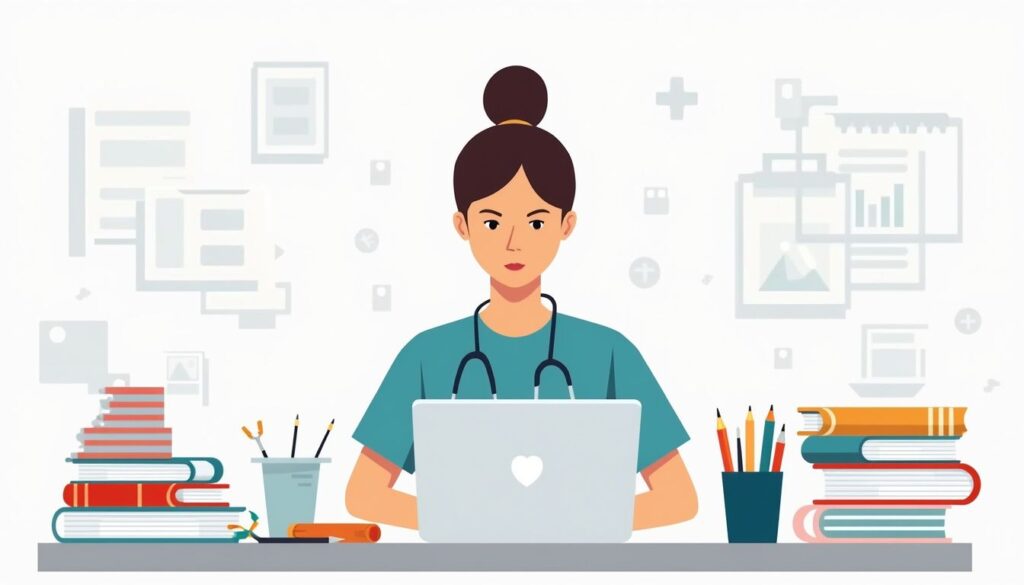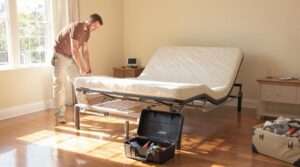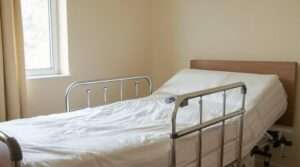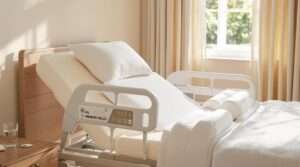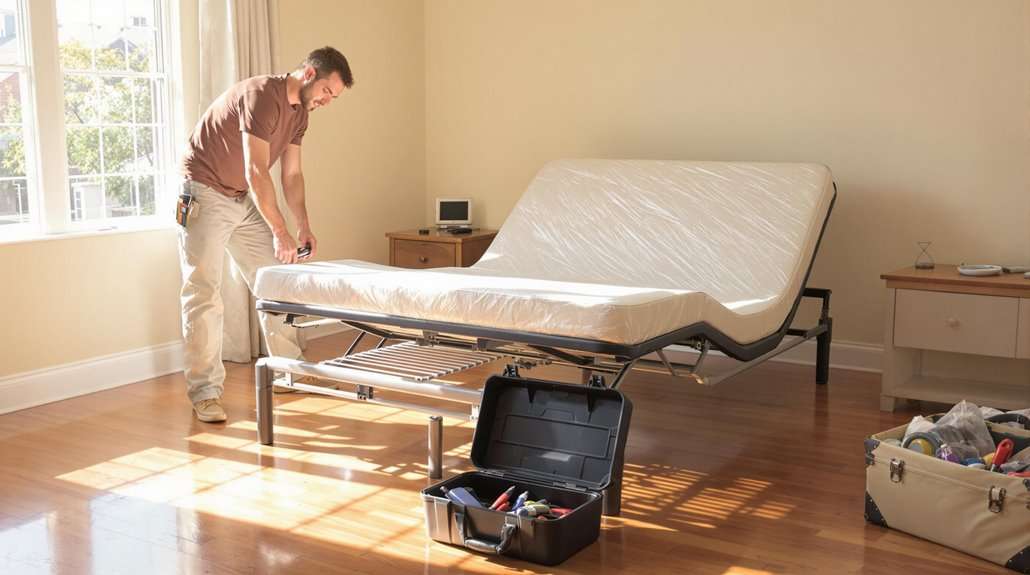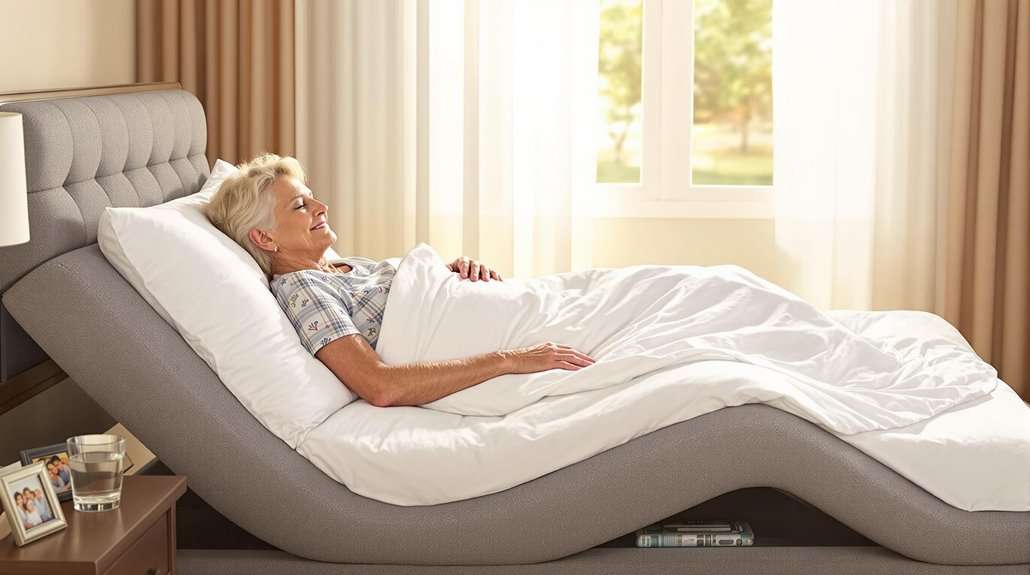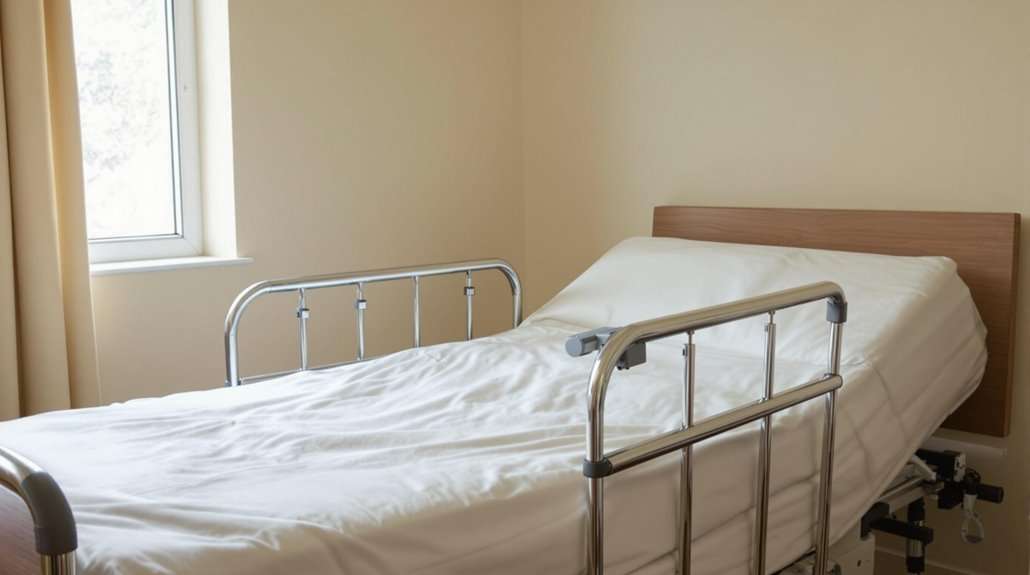Many caregivers struggle to keep their care documentation clear and up to date. Good recordkeeping is vital because patient records and clinical notes help teams give safe, quality care.
This post shares simple tips for writing effective care logs that improve communication, accuracy, and patient care. Read on to learn how your nursing notes can make a real difference.
📋✅
- Clear and objective care logs help health professionals work together, improve patient safety, and support better clinical decisions.
- Using methods like SOAP or SBAR keeps records organized and ensures all vital information, such as symptoms, medication doses, and changes in condition, is included.
- Avoid using unclear abbreviations or jokes in notes; these mistakes can confuse caregivers, lower care quality, and even lead to legal issues.
- Digital care management software boosts accuracy by making records easy to read and update for the whole team while also supporting CQC compliance through regular updates.
- Accurate documentation gives strong evidence during investigations or inspections by groups like the Care Quality Commission (CQC), showing that standards of care are met.
Why Effective Care Logs are Important
Effective care logs play a crucial role in sharing important information among healthcare professionals. These logs help teams make informed decisions and maintain high-quality care for patients.
Sharing information across health professionals
Care logs play a crucial role in sharing information across health professionals. Clear and accurate clinical notes improve communication within the healthcare team. Each caregiver can access vital patient records promptly, ensuring everyone is informed about care changes or updates.
Effective care documentation allows for better collaboration among nurses, doctors, and specialists.
Using objective writing fosters trust between caregivers and patients as it keeps observations factual. For example, noting specific health observations helps all parties understand the patient’s status quickly.
Regularly updating these logs ensures that current details are available to anyone involved in the patient’s care journey. This practice enhances quality assurance in delivering healthcare services.
Making informed clinical decisions
Effective care logs help caregivers communicate vital patient information. Sharing accurate health observations among healthcare professionals leads to better clinical decisions. Care documentation plays a key role in this process.
Clear records provide insights into patient status, treatment responses, and progress over time.
Using objective writing ensures that all entries remain factual and meaningful. This clarity aids in identifying trends or issues that may require immediate attention. Regularly updated nursing notes reflect the latest data, enabling caregivers to adjust care plans as needed.
Overall, well-documented caregiver logs enhance the quality of patient care through informed decision-making.
Maintaining high quality of care
High-quality care relies on accurate and thorough recordkeeping. Care logs provide caregivers with the necessary information to make informed clinical decisions. They allow health professionals to track patient progress effectively.
Clear documentation of nursing notes and observations leads to better patient outcomes.
Using objective writing in care summaries ensures that all relevant facts are included, enhancing communication among caregivers. Regular updates keep everyone informed about changes in a patient’s condition or needs.
High-quality care is possible only when each caregiver contributes detailed, accurate notes for all interactions with patients.
Using as evidence in investigations
Effective care logs can serve as vital evidence during investigations. Clear documentation helps caregivers provide accurate details about patient care and health observations. These records become crucial when health professionals review events or situations that arise.
They support informed clinical decisions and show adherence to standards.
For example, if a complaint arises regarding treatment, well-documented nursing notes offer insight into the care provided. Caregiver reports also contribute to forming a comprehensive view of patient interactions and responses.
Accurate recordkeeping not only assists in internal reviews but also supports CQC compliance. Moving forward, understanding how to write effective care logs will enhance these benefits even further.
Ensure CQC compliance
CQC compliance ensures high standards in caregiving. Care logs play a crucial role in this process. They document patient records clearly and accurately, which supports quality care.
Health observations must meet CQC guidelines to ensure safety and effectiveness.
Falling short of these expectations can lead to serious consequences. Accurate nursing notes help healthcare professionals make informed clinical decisions. Digital care management software often aids in maintaining compliance by streamlining recordkeeping and improving the accuracy of clinical observations.
Caregiver reports should always reflect up-to-date information for best practices in patient care.
How to Write Effective Care Logs
When you write care logs, choose a clear method that suits your needs. Focus on being concise and objective to improve communication among healthcare professionals.
Choose a reliable method (SOAP, STAR, DAR, GIRP, SBAR, CBE, POMR, Narrative Charting)
Choose a reliable method to write effective care logs. Options include SOAP, STAR, DAR, and SBAR. Each method serves a unique purpose for caregivers. For example, SOAP focuses on Subjective and Objective data while highlighting Assessment and Plan steps.
Try using these methods to keep your clinical notes clear and organized. They help you stay objective in your writing. You can capture all necessary information without confusion or ambiguity.
Many caregivers find that these methods improve their recordkeeping practices significantly.
Be clear and concise
Clear and concise writing improves care logs. Use simple language to convey vital information in patient records, nursing notes, and clinical observations. Avoid long sentences or complex terms that may confuse readers.
Focus on specifics related to patient care and health observations.
Each entry should contain relevant facts and objective writing to enhance understanding among caregivers. For example, note changes in a patient’s condition explicitly. Include precise dates and times for shifts while maintaining clarity in your documentation methods such as SOAP or SBAR.
First-hand experience shows that straightforward entries lead to better communication across health professionals, ensuring high-quality care for every patient.
Use objective language
Using objective language in care logs is crucial. It helps ensure that your notes accurately reflect patient observations and actions. Avoid personal opinions or emotional descriptions.
Focus on what you observe, hear, and measure. For example, say “patient has a fever of 101°F” instead of “the patient seems unwell.” This approach maintains clarity in clinical notes.
Objective writing builds trust among health professionals. Clear caregiver reports offer a reliable record for any necessary investigations. By sticking to facts, you allow others to make informed clinical decisions based on accurate data from your shift reports and nursing logs.
Consistent use of objective language enhances the quality of care documentation while supporting compliance with standards like CQC requirements.
Include all necessary information
Include all necessary information in your care logs. Detail health observations, medication dosages, and changes in a patient’s condition. Record vital signs such as blood pressure or temperature accurately.
Write down any caregiver notes that may help other healthcare professionals understand the patient’s needs.
Clarity matters more than anything else. State facts plainly without ambiguity. Avoid using abbreviations that could confuse others. Update patient records after each shift to ensure consistency and accuracy.
Your thorough documentation helps maintain high-quality patient care across all shifts and communication among caregivers, ensuring everyone is informed about ongoing treatments and observations.
Update regularly
Updating care logs regularly keeps patient records accurate and reliable. Timely updates allow caregivers to capture health observations as they happen. Write notes after each shift or whenever a change occurs.
Provide clear descriptions of medical entries, including symptoms, medications, and interventions.
Incorporating regular updates helps maintain high-quality care. It ensures all health professionals have access to the latest information about a patient’s condition. Effective recordkeeping promotes informed clinical decisions that benefit patients directly.
Keeping your logs up-to-date supports compliance with CQC standards for quality care documentation. Next, let’s explore common mistakes caregivers make when writing care logs.
Common Mistakes When Writing Care Logs
Many caregivers use unclear abbreviations that can confuse others. Making jokes in care logs can lead to serious misunderstandings and unprofessional records.
Using ambiguous abbreviations
Using ambiguous abbreviations can lead to confusion in care logs. Caregivers should avoid unclear shorthand that others may not understand. For example, the abbreviation “BP” usually means blood pressure.
However, it might confuse someone unfamiliar with the context if you use it without explanation.
Effective care documentation focuses on clarity and precision. Recordkeeping must communicate vital health observations clearly. Always spell out important terms during nursing notes or clinical observations.
Clear communication helps ensure high-quality patient care and supports caregivers in their roles.
Making jokes/comments
Making jokes or comments in care logs can lead to serious issues. Care documentation must remain professional and respectful. Casual remarks can confuse other health professionals reading the notes.
Ambiguities may harm patient care. They might cause misunderstandings and impact clinical decisions.
Humor has no place in nursing notes or caregiver reports. Objective writing helps maintain clarity in patient records. Always focus on factual information when documenting health observations, shift reports, and clinical notes.
Keeping a professional tone ensures high-quality care for patients and compliance with CQC standards.
Tampering with records
Tampering with records can have serious consequences. Caregivers must maintain accurate patient records. Altering information or covering up mistakes undermines the trust between health professionals and patients.
It can lead to miscommunication, affecting clinical decisions and patient care.
Health observations should reflect real events without any modifications. Falsifying nursing notes or caregiver reports is unethical and may even result in legal repercussions. Objective writing remains crucial for the integrity of care documentation; honesty is key to effective recordkeeping in healthcare settings.
Benefits of Using Digital Care Management Software for Care Logs
Digital care management software simplifies record-keeping for caregivers. It boosts accuracy and ensures that multiple health professionals can access information easily.
Streamlined and efficient record-keeping
Caregivers benefit from streamlined and efficient record-keeping. Digital care management software simplifies logging health observations and patient records. This software organizes information in a clear format, reducing time spent on paperwork.
Caregivers can access clinical notes quickly, allowing for better communication among health professionals.
Using digital tools enhances the accuracy of nursing logs. Clear documentation helps maintain high-quality care by ensuring all necessary details are included in caregiver reports.
Regular updates keep shift reports current, which supports informed clinical decisions. An organized system boosts compliance with CQC standards, creating a safer environment for patients.
Increased accuracy and legibility
Streamlined and efficient record-keeping leads to increased accuracy and legibility in care logs. Clear documentation helps caregivers avoid errors. Precise written notes improve communication among health professionals.
This clarity ensures everyone understands patient records clearly.
Using digital care management software enhances the quality of clinical notes. It allows caregivers to type their observations quickly, making them more readable. Many software programs offer customizable templates for nursing notes or caregiver reports, which simplifies tracking health observations.
First-hand experience shows that accurate documentation improves patient care significantly, as it eliminates ambiguity in shift reports and caregiving tasks.
Legible records also help during inspections by the Care Quality Commission (CQC). Properly documented information supports compliance and provides evidence during investigations. By focusing on objective writing techniques, caregivers can create better and clearer healthcare notes that benefit both patients and staff alike.
Accurate recordkeeping promotes informed clinical decisions too, ensuring high-quality care for all patients involved.
Easy access for multiple health professionals
Easy access to care logs benefits multiple health professionals. Caregivers can enter patient records into digital systems, making it simple for other staff members to view and update information.
This transparency fosters teamwork among nurses, doctors, and therapists.
Digital platforms allow fast sharing of clinical notes and health observations. Everyone involved can see current nursing notes without delays. The use of customizable templates makes recordkeeping straightforward in different settings.
Such tools improve communication and enhance the quality of patient care significantly.
Assists in CQC compliance
CQC compliance ensures that care facilities meet essential standards for quality and safety. Effective care logs play a vital role in this process. They provide clear documentation of patient records, health observations, and caregiver reports.
Accurate recordkeeping helps healthcare providers demonstrate their commitment to maintaining high-quality patient care.
Regularly updated clinical notes show that caregivers follow best practices. These logs help health professionals share information efficiently, aiding informed decisions about patient treatment.
For example, using digital care management software can enhance the accuracy and legibility of these records. This makes it easier for staff to access necessary data during inspections or audits.
Understanding how to write effective care logs strengthens your organization’s CQC compliance efforts while improving overall care delivery.
Next, let’s explore common mistakes when writing care logs.
Customizable templates for different settings
Effective care logs can benefit from customizable templates for different settings. Caregivers can use tailored formats to fit specific situations, whether in a hospital or at home.
These templates help structure information clearly and consistently.
With clear sections for patient records and health observations, they ensure essential details don’t get missed. Using standardized formats saves time during recordkeeping, making it easier to update shift reports or nursing notes as needed.
Each caregiver gets the chance to streamline their documentation while maintaining high quality of care.
FAQs
1. What are the best tips for writing effective care logs?
Use clear and objective writing in your caregiver logs. Record key health observations, patient records, and clinical notes right after each shift for accuracy.
2. Why is accurate recordkeeping important in nursing notes?
Accurate recordkeeping helps ensure that all clinical observations and patient care actions are tracked. This supports better reporting and safe healthcare decisions.
3. How do I make my shift reports more useful to other caregivers?
Write detailed yet concise shift notes about each patient’s condition and changes during your time with them. Use simple language so others can understand your care documentation quickly.
4. What should I include in daily caregiver reports?
Include vital signs, health tracking details, medication times, responses to treatment, and any changes you notice in the patient’s behavior or condition within your nursing logs.
5. How can I improve objectivity when documenting healthcare notes?
Describe only what you see or hear without adding personal opinions to your clinical notes or caregiver reports; stick to facts for reliable patient records every time you write care documentation.

